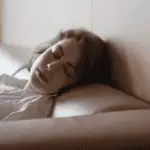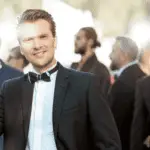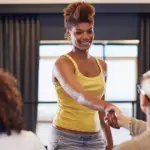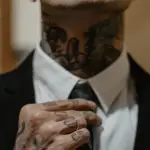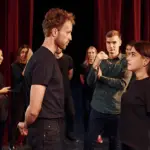Headshots can be an intimidating prospect for any actor. This is your most important marketing tool, the thing that has to make an impression in every casting director’s mind. A high quality headshot can be the difference between a working actor, and one who can’t get hired.
To make sure your headshots are the best they can be, there are a few things to keep in mind. Rather than getting caught up in the detail, remember to project yourself instead. After all, that’s who they’ll be hiring.
How do you take a good headshot for acting?
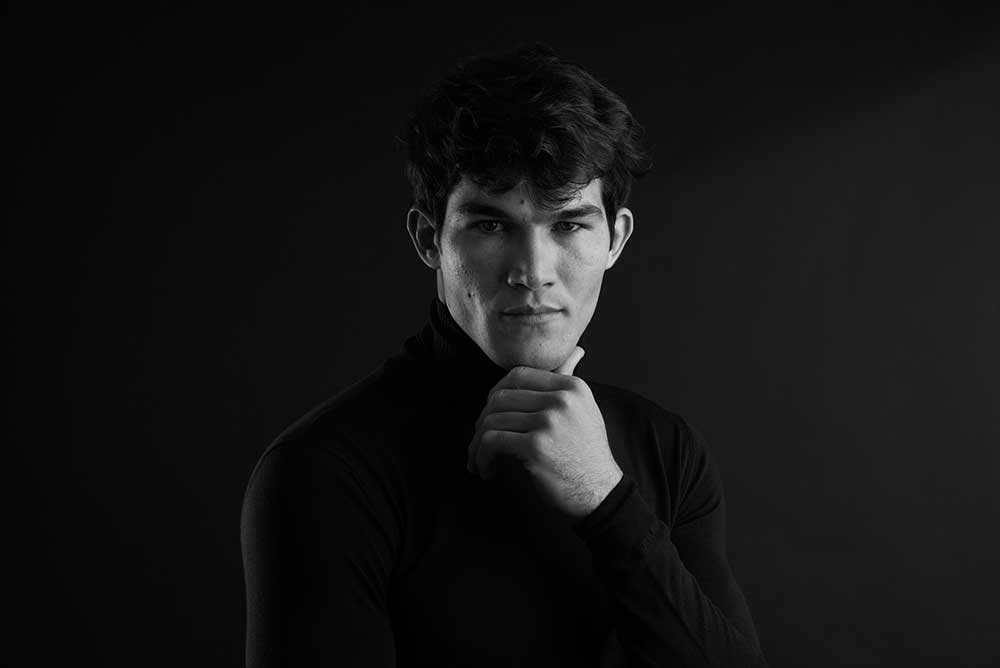
To take a good headshot for acting; practice expressions beforehand, relax, and work with a professional photographer. This way you get photos that are engaging and appealing.
A good headshot shows personality. Rather than focusing on clothing and poses, create a connection with the camera. The primary focus should be on the eyes. Try different expressions in front of the mirror: happy, sad, emotional, etc. See what connects, and what makes you look your best. Don’t overdo posing. Keep it casual and relaxed. This allows you to appeal for more roles.
We all have some idea of our best angles – play around with them.
Lighting is incredibly important. You want to be well-lit, but not dramatically so. Both natural and studio lighting can work for different effects.
The background should be neutral, and definitely shouldn’t draw attention away from the subject (you). A good headshot is chest up, face forward, and relaxed shoulders.
Can a headshot be full body?
A traditional headshot is close up, but you can have a three-quarter length or full body headshot.
These shots are closer to standard for models rather than actors. A full body headshot is much more demanding. It requires a full engagement of the body. However, done right, and it can really stand out.
What do actors wear for headshots?
Actors wear simple, professional clothing when taking headshots. A plain top is best, in a solid shade. Jewel colors are good for standing out, but anything that flatters works. Avoid prints and graphics, or they can detract from the person. It’s best to wear something you feel comfortable and natural in.
You should not wear a costume. Or carry around props. For a start, they’ll only be useful in one situation, so unless you want nothing but cop roles, ditch the policeman outfit. A costume looks amateurish, and like you’ve done all your research via cartoons.
You can tailor your clothes to suit a personality. For example, wearing a blazer if you’re looking for roles as a professional, or layering jackets to skew younger. Do this to emphasize personality, rather than look like you’re playing dress-up.
Should headshots be glossy or matte?
Both are acceptable, but matte is preferred. A matte finish is less likely to show fingerprints and marks. As a headshot gets held and passed around, this keeps the quality higher.
A glossy finish is more reflective, which can be inconvenient when under bright lights. However, as matte finishes are more common, glossy finishes do stand out.
What is the best way to stand for pictures?
The best way to stand for a picture is relaxed, with good posture, at a slight angle. The body shouldn’t be tense. Relax your hands, arms, and shoulders, and the rest of the body will follow.
Search for angles that look natural, and show off your best sides. If you don’t angle to the side, then lean forward slightly. It helps create a connection with the camera. A photo taken too straight on risks looking like a mugshot.
When posing for a headshot the focus should be on your face, always. The body is secondary to the facial expression.
How should I pose for a headshot?
When posing for a headshot you want to stay at slight angles, remain relaxed, and try a few different poses.
Being relaxed is important to give the photos a natural feel, you don’t want to seem nervous or off-putting before a casting director has even had a chance to meet you. Your hands probably won’t be in shot, but keep these loose regardless. If they are balled into fists, then tension will show in your shoulders.
Always stand at a slight angle, and keep your back straight. The chin should be slightly raised, to prevent a double chin. Common advice given is to pretend you have to hold an apple under your chin. This stops it from dipping too much.
Practice poses and facial expressions before starting. You may feel stupid, but it’s worth doing. For a start, you’ll feel more relaxed doing it in front of the camera. It also allows you to see what looks natural and authentic, and what may be slightly less flattering. Practice a smiling face, an emotional face, a casual face, and a neutral face.
The eyes are a powerful tool, so practice communicating with them. They need to be engaging. Work on this at home in front of a mirror.
A professional photographer will be able to guide you in poses. You may feel more comfortable sitting, or leaning against a wall. They’ll be able to tell you what’s working, and find more authentic poses.
Is a selfie a headshot?
A selfie should not be used as a headshot. They lack the skill of a professionally taken headshot, and will seem amateurish in comparison. A headshot can be taken on a phone, but always ask someone for assistance.
It’s harder to connect with the camera when taking a selfie. As you’re focusing on two things at once, the pose and the photo, sacrifices have to be made. This either leads to a shoddy photo, or a model who doesn’t connect with the camera in the same way.
Ideally, a headshot will be taken by a professional. Remember that it’s being used to make you money. It’s better to pay more upfront, as you’re more likely to see the returns.

